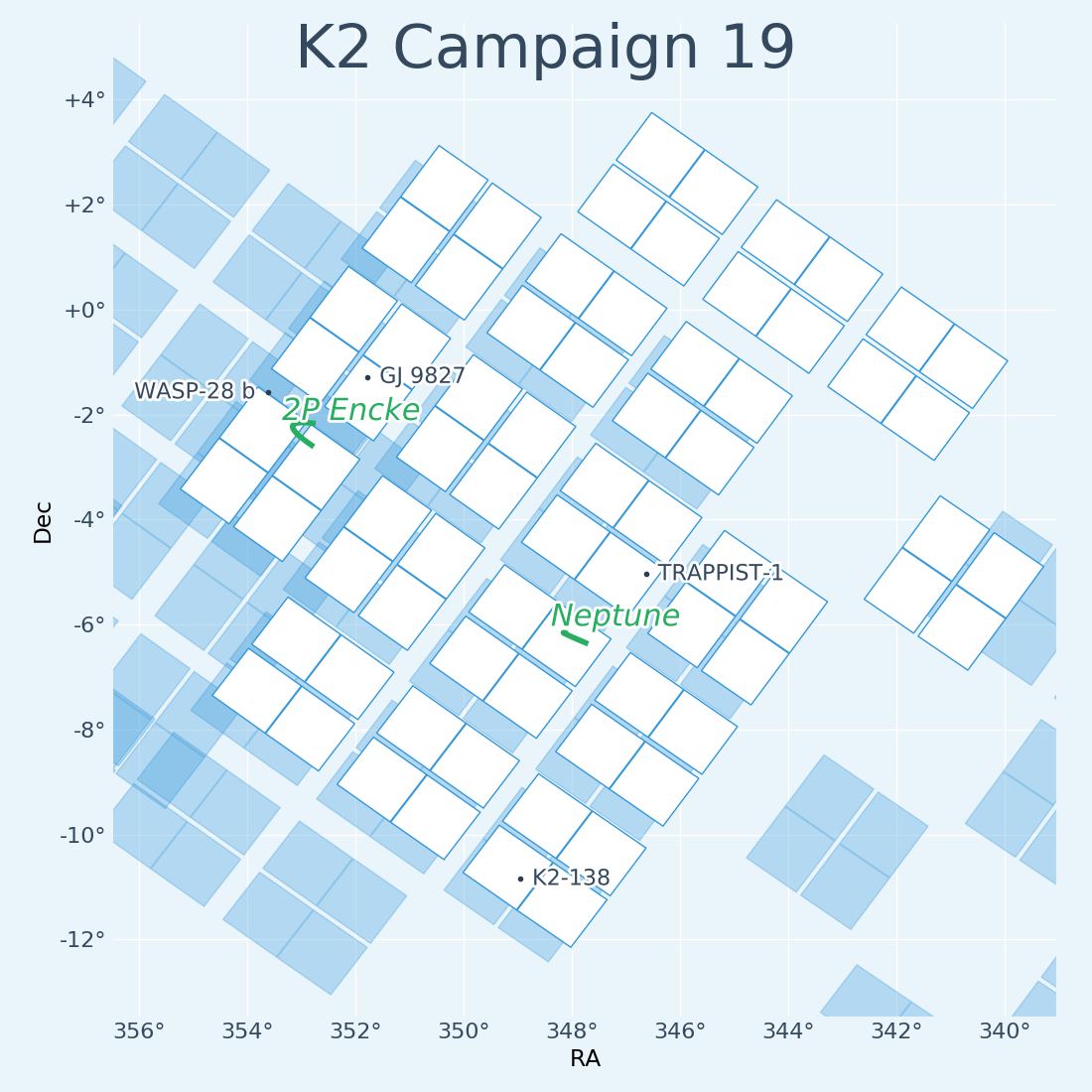The science program and target lists for K2 Campaign 19 have now been posted on the approved targets & programs page.
The target list includes 33,863 standard long cadence and 216 standard short cadence targets located towards the constellation of Aquarius. The Campaign partially overlaps with Campaigns 3 and 12, while also surveying ~15 deg2 of previously unstudied sky.
Notable targets include the nearby planet systems TRAPPIST-1 and GJ 9827. These systems host some of the most amenable small planets for atmospheric characterization known to date, i.e. TRAPPIST-1 f, GJ 9827 b, and GJ 9827 d. The Hubble Space Telescope is scheduled to observe GJ 9827 b on September 16th and 21st, simultaneously with Kepler, obtaining a transmission spectrum to characterize water abundance in the atmosphere. Kepler will provide a unique photometric context to the Hubble observations for the purpose of constraining astrophysical noise such as star spots and provide precise transit modeling when HST is in Earth occultation.
Other notable targets include:
- Dozens of confirmed and candidate exoplanets previously discovered during K2 Campaigns 3 and 12, including K2-138, the resonant system of five planets discovered by citizen scientists, and HD 215152, a system known to contain four short-period RV planets.
- A large sample of low-mass flare stars and white dwarfs in short cadence.
- 11,501 galaxies are being surveyed for supernovae and other transients.
- 30 Solar System objects are being monitored, including the planet Neptune and its moon Triton in short cadence, and comet 2P/Encke in long cadence.
The figure below illustrates the location of the field and its notable targets.
